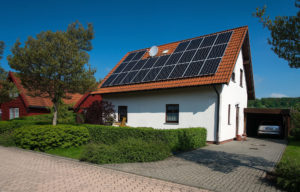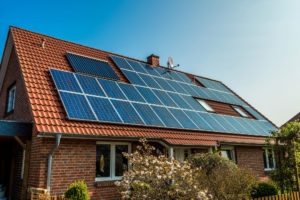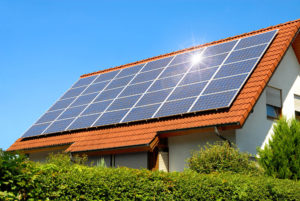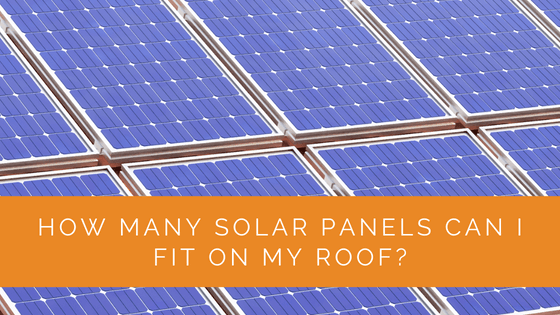Installing solar power panels is a terrific way to save money on your power bills. But first, you must make a few crucial considerations about your solar installations, the type, size, and number of solar panels you need.
Selecting the correct size of solar panel system will help you get the most out of your panels by regulating the energy you consume with the energy you extract. It allows you to strike the ideal balance between the upfront cost and the long-term profitability.
Contents
- 1 Key Takeaways
- 2 Solar Panel Installation – Two Ways
- 3 How Many Solar Panels Can You Install?
- 4 Exactly How Many Solar PV Systems Do You Need?
- 5 Case Study: Optimising Roof Space for Solar Panel Installation
- 6 Expert Insights From Our Solar Panel Installers About How Many Solar Panels You Can Fit on Your Roof
- 7 Discover the Power of Solar with Solar Panels Network
- 8 Wrapping Up
Key Takeaways
- When considering how many solar panels to install on your roof, factors such as roof dimensions, panel placement, panel type, budget, and energy needs must be considered.
- The dimensions of your roof will directly impact how many solar panels you can install, and it’s essential to consider the orientation and tilt of your roof for optimal energy generation.
- Your energy needs, the efficiency of the panels, and the peak sun hours in your location will help determine the number of panels required to meet your energy demands. Additionally, whether you are often at home during the day affects how much solar energy you can utilise.
Solar Panel Installation – Two Ways
Solar panel installation is an excellent step toward a sustainable, energy-efficient lifestyle and lower monthly power costs. After inspecting your roof and considering factors like available space, shadowing, and roofing issues, most solar contractors will create a bespoke solar scheme just for you.
But if you want to determine the factors beforehand or purchase a solar panel system without guidance, this guide will aid you in determining your usage and the number of panels on your roof.

How Many Solar Panels Can You Install?
Assessing the maximum number of installed PV panels is a smart first step since it will offer you a clear image of everything that is and isn’t doable. This calculation takes into account the roof area and budget. It also shows you what you must deal with to make extra selections depending on those aspects.
Roof Dimensions
The dimension of your roof directly impacts your physical capacity to install a solar PV system. While you may begin with the most panels that would fit on your rooftop, assessing your demands and choosing the most appropriate selection for your budget is always advisable.
To calculate the dimensions of your roof space, you must first determine the dimensions of your property. You may verify the original drawings for the house or use a measuring tape to take measurements all along the bottom of the house’s wall to obtain a broad sense of your roof size.
Panel Placement
Ensure you’re just taking measurements in areas that will work for solar panels. For instance, if you want to put panels on the southern side of your house, you will calculate the length of the roof only along the south side and then the roof along the east side, beginning at the corner and ending around halfway up the wall.
Why don’t you measure the roof instead of the walls? While doing the math alone is riskier, the results will be less off measuring the walls.
Solar panels function best in sunny locations and should be put on a south-facing rooftop with a tilt of at least 40 degrees. Flat roofs are generally not advisable. But when that isn’t an option, solar panels mounted on other roofs or facing different directions may still generate income.

Panel Type
Since there is no industry standard for solar panel sizes, the exact number of panels required may vary depending on the manufacturer. There might be size differences across solar panel models even within the same manufacturer.
The size of panel fit on your roof may be adjusted once you’ve decided on a manufacturer and product. If you want to put the possible solar panels on your roof, you’ll need to pay great attention to the exact dimensions of what you’re installing.
Budget
In addition to the square footage of your roof and the area of the solar panels on your roof, your financial constraints will be crucial in selecting the kind of solar panel system.
Even though you may recoup some of your investment via government initiatives, you should still plan on spending a substantial amount of cash.
Exactly How Many Solar PV Systems Do You Need?
Once you know how many panels will fit on your roof, you may use the following data to determine your needed panels.
Combustion and Generation of Energy
Knowing how many solar panels will fit on your roof is the first step; you’ll also need to calculate your annual energy needs. You may use this to estimate whether or not you will have excess solar power after meeting your energy demands.
The number of individuals who live in your house, the number of machines you have, and the time of year may all affect your energy consumption.
Another thing to remember when calculating your solar panel needs is the energy output of individual panels. The quantity of solar energy generated by solar panels varies. Many panels would need to be purchased if their efficiency was reduced.

Peak Sun Time Per Day
The peak sun hours in your location are important when determining how many solar panels to buy. Your roof solar system can absorb this much sunshine every day.
Take the average daily amount of sunlight you receive, and after being multiplied by 30, this figure will give you the total amount of daylight hours every month.
Knowing how many kilowatt hours your panels can generate during peak hours requires this data.
Spending Time at Your House
Even if you spend the night in your own house, you can only utilise a fraction of the energy production you create without a storage system. This is because PV panels only create energy during the day when no one is home to consume it.
Thus, any energy the panels generate throughout the daytime will be sent straight to the power grid. While your solar panels will help offset some of your power costs, they likely won’t be able to meet all of them.
Spending less on electricity costs and more on savings is possible when you are home to utilise the power produced by your solar panels. That way, you may fit as many panels onto your roof without going overboard financially or structurally.
If you spend time at home in the evenings, you may reduce the size of your system and the associated installation cost.
Case Study: Optimising Roof Space for Solar Panel Installation
Background
A suburban home in Oxfordshire, with a medium-sized roof and moderate energy needs, aimed to reduce its reliance on grid electricity. The homeowners wanted to explore the feasibility of installing solar panels to lower their energy bills and contribute to environmental sustainability.
Project Overview
The primary goal was to install a solar PV system that would maximise energy production within the constraints of the roof’s size and orientation. The project required a thorough assessment of the roof space, shading, and energy consumption patterns to determine the optimal number and type of solar panels.
Implementation
- Site Survey and Roof Assessment: Conducted a detailed survey to measure the roof dimensions, assess the shading from nearby trees and structures, and determine the roof’s orientation and pitch.
- System Design and Panel Selection: Selected high-efficiency monocrystalline solar panels to optimise energy output. Calculated the total roof area available for installation and designed a system layout to maximise coverage and efficiency.
- Installation and Setup: Installed the panels with a slight tilt to optimise sunlight capture. Ensured proper wiring and connection to the home’s electrical system, including the installation of an inverter to convert the generated DC power to usable AC power.
Results
- Increased Energy Production: The system covered 80% of the roof space and provided 70% of the household’s energy needs, significantly reducing grid dependency.
- Cost Savings: The installation resulted in an immediate reduction in electricity bills, with an estimated payback period of seven years, thanks to both energy savings and government incentives.
- Enhanced Property Value: The addition of solar panels increased the home’s market value and appeal to environmentally-conscious buyers.
Summary
This case study highlights the importance of a customised approach when installing solar panels. By carefully assessing the roof space, energy needs, and available budget, the homeowners in Oxfordshire successfully maximised their solar energy production. The project demonstrates the potential for significant financial savings and environmental benefits, making it a valuable reference for others considering solar panel installations.
Expert Insights From Our Solar Panel Installers About How Many Solar Panels You Can Fit on Your Roof
Calculating the number of solar panels your roof can accommodate involves several factors, including roof dimensions, orientation, and your energy consumption patterns. It’s crucial to tailor the installation to your specific needs to maximise efficiency and savings.
Senior Solar Installer
Selecting the right type and number of solar panels can significantly impact your return on investment. The efficiency of each panel and the available roof space must align with your energy goals and budget.
Solar Energy Consultant
While a south-facing roof is ideal, we can design systems for various orientations and roof types. Each setup is unique, and we always aim to optimise the panel placement for the best possible energy yield.
Lead Project Engineer
Discover the Power of Solar with Solar Panels Network
Are you navigating the world of solar installations? Look no further than Solar Panels Network, the UK’s trusted partner in harnessing the sun’s potential. Our dedication goes beyond just installations; we’re on a mission to transform how homeowners and businesses across the UK perceive and utilise energy. By choosing us, you’re reducing your carbon footprint and making a smart financial move that promises savings for years ahead. Contact us today and embark on your solar journey.
Wrapping Up
Is it wise to get solar panels on your roof? Getting solar panels installed is not always a simple task. Several elements may affect solar panel installations, including the inverter, roof shade, and roof orientation. This is not something you can easily judge on your own. If you’re having trouble deciding whether or not a system will work for you, it could be best to seek the advice of local installers.
Speak with a professional solar provider to determine the specifics of integrating solar panels on your roof and where they will be most effective. Additionally, installers will inform you of the prices you might expect to incur, any planning permissions you need, and any local incentives or tax breaks to which you may be entitled.
About the Author
Solar Panels Network stands at the forefront of solar energy solutions, driven by a team of seasoned solar engineers and energy consultants. With over decades of experience in delivering high-quality solar installations and maintenance, we are committed to promoting sustainable energy through customer-centric, tailored solutions. Our articles reflect this commitment, crafted collaboratively by experts to provide accurate, up-to-date insights into solar technology, ensuring our readers are well-informed and empowered in their solar energy decisions.

